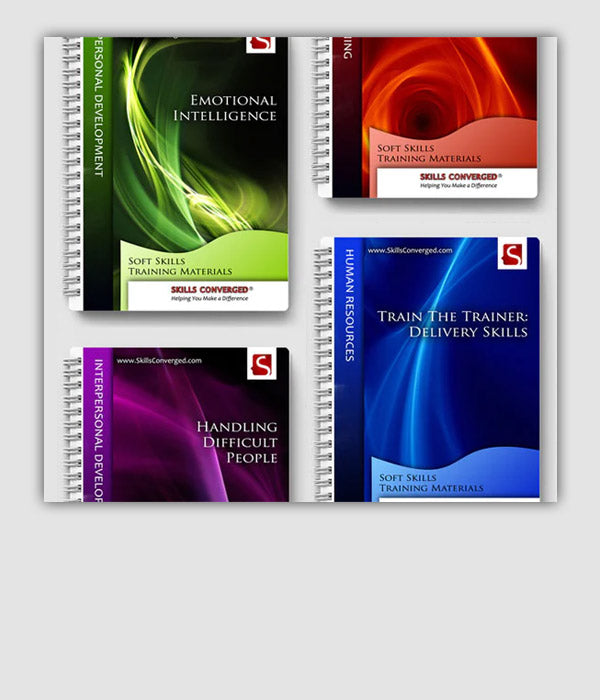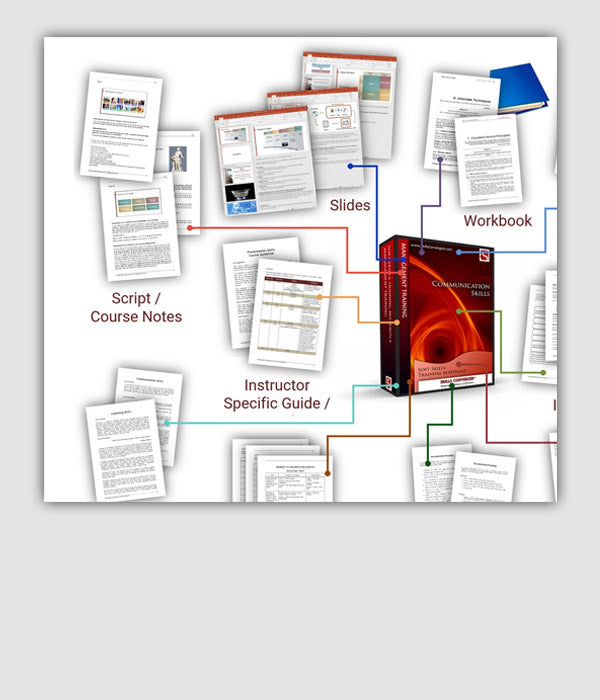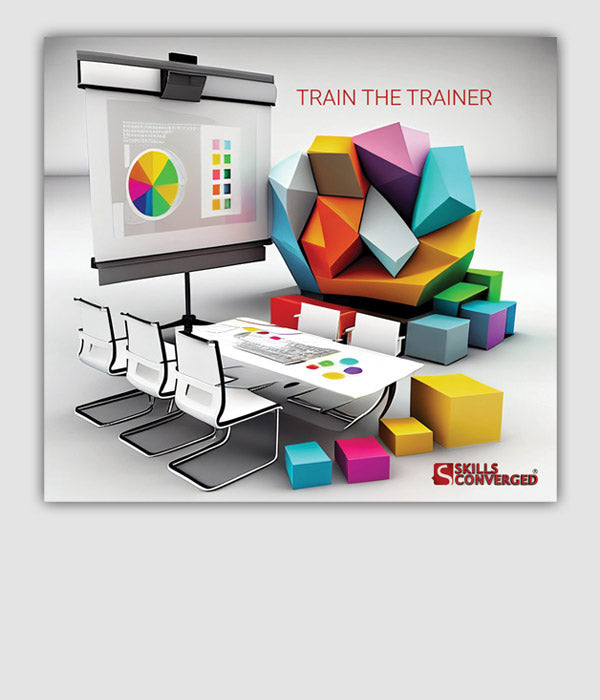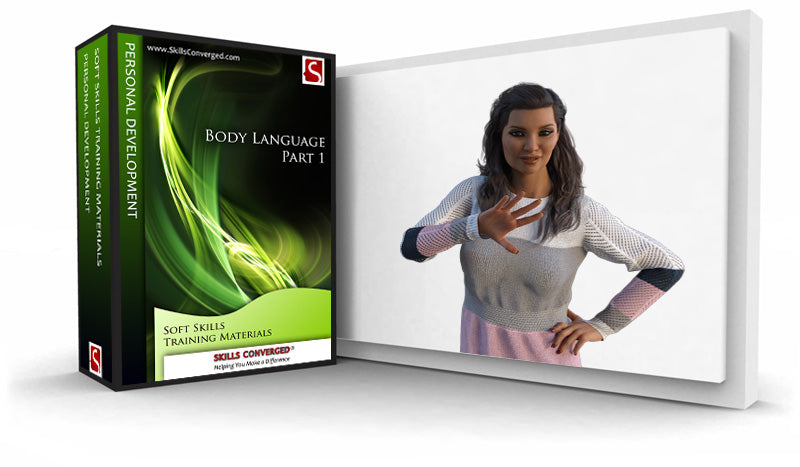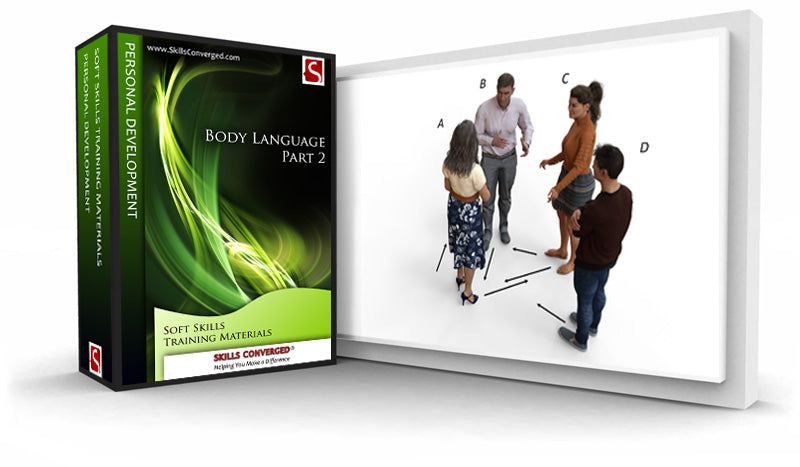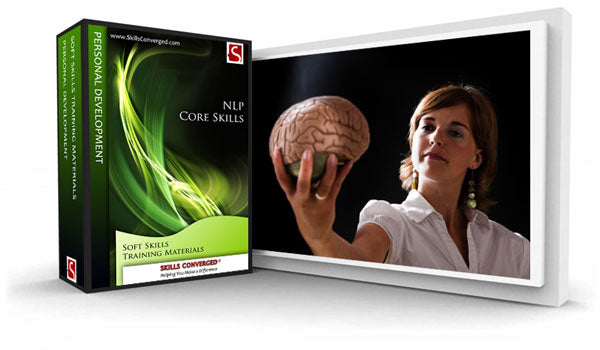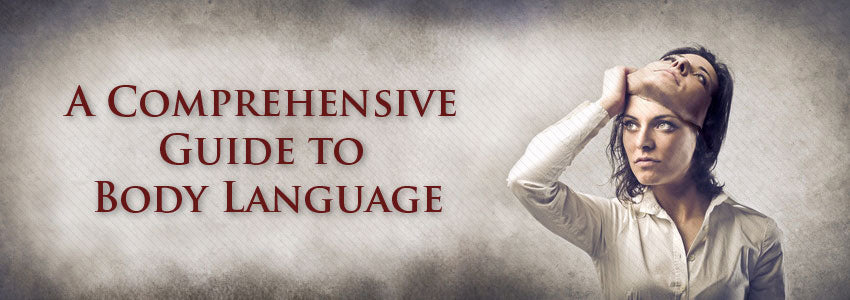
A Comprehensive Guide to Body Language
“There are four ways, and only four ways, in which we have contact with the world. We are evaluated and classified by these four contacts: what we do, how we look, what we say, and how we say it.”
Dale Carnegie
You’ve just heard someone saying, “That’s great”
What do you think that person means? You are most likely to say that it depends. What does it depend on? It depends on how they say it. Try it yourself. Say the sentence aloud while implying that you are pleased. Now say it with sarcasm. Now say the same sentence with surprise. Try it again while sounding frustrated.
What’s happening here? The sentence consists of only three words; nevertheless, you are able to express totally different meanings just by changing the tone, pitch and what part of the sentence you have stressed on. So far, you have only expressed it verbally, though you have managed to produce different meanings. Imagine how many more meanings you can get if you were able to include hand gestures and other non-verbal signals.
The idea that we communicate not just through words but our entire body is called body language. It consists of non-verbal communications including gestures, body posture, facial expressions, eye movements, touch, voice and physical space.
Why Body Language Matters
Everybody communicates through body language. This is not only about learning how to communicate through your body; it is also about being conscious of other people’s non-verbal signals as a way to improve communication skills. Some people are also interested to learn body language in order to build rapport where one does not readily exist. Some are also interested to use it to deceive or spot deception.
In addition, by being conscious of your own body language, you can quickly correct your posture and gestures to avoid misunderstandings. As a simple example, we are all aware of the meaning of yawning which is usually associated with boredom. Since you know this association, when listening to someone you would avoid or disguise your own yawn to avoid offending the person.
With more extensive knowledge you can control your appearance with precision, much like a politician. This will allow you to carefully plan how you want others to react to you and feel about you, ultimately increasing your personal impact and presence.
The main use of learning body language is to understand people’s true emotions, intentions and their general attitude towards you which ultimately helps to improve your communication with them; whether you want to extend it (because they are interesting) or you want to reduce it (because they are deceptive).
What Are the Advantages of Knowing Body Language
Non-verbal communication matters strongly in business, corporate management and in personal life. It provides the following benefits:
- Allows people to develop a deeper understanding of others which in turn allows them to strengthen their relationships.
- Allows managers to better understand their staff and their needs even if employees are reluctant in sharing their views verbally either because they are apprehensive about sharing what they think or because they don’t think it is appropriate.
- Team members can read each other’s body language to understand what everyone is going through, who is under pressure and who needs support.
- It can significantly help in negotiations as you can understand the other party’s thoughts on your position without relying only on what they say.
- Allows you to avoid being deceived by experienced salespeople who want to manipulate you into buying their products.
- Knowledge of body language can help you to persuade others better. Through their gestures and non-verbal signals you can better understand what they like or dislike. This would allow you to customise your ideas or offer something to match their needs.
- It increases your confidence and self-esteem as you become more aware of how others feel, how you are seen by them and how to control your interpersonal communication more effectively
- It can improve your presentation skills and public speaking as you understand the power of non-verbal signals and appear confident, convincing and entertaining.
- By showing a different signal than the one you should be showing based on your current feelings, you could hide your emotions. This can be beneficial to you in negotiations or when persuading others, but it is also helpful in building relationships. For example, it allows you to hide signals that you would be showing as a result of culture shock. In time, when you get used to a new culture you can relax and learn to accept it.
- Knowing how to deceive helps you to know when you have been deceived by others. As there are many people who eagerly want to deceive us, learning about deceptive body language tactics becomes critical. Whether we want to use this skill on others is a personal and moral matter, highly depending on circumstances.
- It increases your self-awareness which can ultimately help you improve your emotional intelligence.
- It helps you to empathise with others. Empathy is about understanding how others feel. The ability to show empathy helps in establishing rapport and is a significant factor in building and maintaining strong relationships. People would not hang around for long if they think you don’t care about them.
How Non-Verbal Communication Is Used
You can express non-verbal cues in three different ways:
-
Reinforcing. With this technique you reinforce your verbal message with a non-verbal one. Examples are:
- You say, “No”, and show the palms of your hands at the same time.
- You say, “I am not happy with this”, and bang on the table with your fist.
- You say, “What have you done?”, in an intimidating tone while looking through the top of your glasses.
- Your boss says, “You have done really well!”, and follows this by patting you on the back gently, thereby increasing the impact of the message.
Reinforcing Body Language
-
Contradicting. You can also contradict what you say with your body language. You might do this intentionally or unconsciously. Examples are:
- You say, “Ok, I’ll go get some food!”, while rolling your eyes just after you say it, indicating that you are not really happy about doing this task even though verbally you’ve agreed to do it.
- You say, “Carry on, I am listening”, while your eyes go back to the computer monitor in front of you indicating that you might be more interested in something else.
Contradicting Body Language
-
Complementing. With this technique, your gestures and body language add more information to what you are saying. Inability to complement a verbal message with non-verbal signals can lead to misunderstanding. It is also critical to read someone else’s body language to make sure you fully understand what they mean. Examples are:
- You hear, “Oh, shut up!”, followed by a casual body posture and breaking of eye contact. The other person is telling you to stop teasing her. If the complementing tone and facial expression is different or missing you could be interpreting this as an aggressive remark forcing you to stop talking.
- A mother starts to tell a story about tooth fairy to a child while winking at an older sibling indicating that the story is not true, but she is telling this to the child as a cultural custom. The wink adds value to the communication without the need to verbalise it as it is not possible to do this in front of the younger child.
- You add a smiley to a text message to simulate body language in the digital world and ensure that the receiving person understands that you were joking.
Complementing Body Language
Developing Your Emotional Intelligence
Whether you are aware of them or not, emotions are constantly involved in your interactions with other people. They also play an important role in your decisions in everyday life and work. Emotional awareness allows you to know how you are feeling and why. This in turn allows you to express yourself more effectively as you understand how others see you.
Countless studies show that strong emotional intelligence can lead to strong performance and better success in life. Emotional intelligence allows you to empathise with others and you can do this with good knowledge of non-verbal signals. It can help you to respond to people more appropriately rather than just reacting to them.
For example, suppose your colleague is very angry at you. You have a choice to react, become defensive and potentially shout back. This can only exacerbate the situation and will do little for your relationship in future. You may win the battle, but you will certainly lose the war as your relationship can be affected and you may both feel that you will never want to work with each other again.
Instead, by not reacting to anger and adopting the body language of a person who is sympathetic and comforting, you are more likely to defuse a difficult emotional situation. An angry person has something to be angry about and all he is seeking is the recognition that he has been mistreated. Once acknowledged, he will immediately cool down. Sometime later, when he is less emotional, you can discuss the issue more logically. The key here is to show a number of specific non-verbal signals at the right time. A sympathetic expression, a non-confrontational posture, a non-defensive stance and a friendly demeanour that suggests the relationship is more important than the dispute can easily defuse the situation, calm the nerves and prepare the scene for a more rational and civilised encounter.
Non-verbal Signals
Imagine what you think of a person if he is slouched and looking at the ground while walking. In contrast, consider a military general who walks so upright he looks bigger and stronger than what he really is. Which one looks more confident?
Posture includes the state of the body and body movements over time. Ability in reading other people’s posture and interpret it can lead to a wealth of information about that person. Since many non-verbal signals are unconsciously delivered, they can be a great source in addition to what a person verbally says in understanding a person’s thoughts and feelings.
In general, various signals can be divided to the following categories:
Body Language Signals
- Posture. General body structure held in a certain way.
- Bearing. Orientation of the body.
- Body Movement. Movement over time.
- Stance. The way a person stands.
- Gestures. Expressions using arms, hands and legs.
- Facial Expressions. Expressions using face.
- Eyes. Eye movements.
- Touch. Touch and personal space.
- Voice. Tone and pitch of voice as well as speed of verbal speech.
Non-verbal signals should not be interpreted on their own. You should treat each as only a contributing factor. When you see a signal, look for other signals that lead to the same emotion or attitude. Even if you have many signals, you need to put it into context and examine the environment. If the environment also supports the existence of a certain attitude, check for congruence; does it actually make sense to see this attitude or emotion? Does it match the words? Is it historically a habit of the person to behave this way? Only then you can be sure of your analysis of a people’s body language, whether you want to know if they are lying, hiding something or have an agenda.
What You Will Find in This Guide
This page is your starting point in this guide. This is an extensive field and is constantly researched. There is a lot to learn and as a skill, you should practice regularly until you master the art.
Below you will find an index to a series of comprehensive articles on various aspects of body language such as improving first impressions, giving better public presentations or variations across cultures. As for gestures and their interpretations, these are provided in a series of sub-articles that focus on specific behaviours or emotions. This will introduce you to gestures and postures associated with a particular act such as deception or dominance, helping you to interpret them correctly.
You can use this guide for self-learning, or use the content to train others on the subject. If you are a trainer, you can also benefit from body language training materials and related products listed on the right.
Read the first part of the body language series:

All Articles in the Series
A Comprehensive Guide to Body Language
Origins of Humans and Body Language
How to Read People Using Their Body Language
How to Influence Your Emotional State Using Body Language
Body Language Across Different Cultures
Body Language of Defensive Attitude
Body Language of Good First Impressions
How to Improve Personal Impact
Continue Reading the Body Language Series..
Body Language Guide Article IndexBody Language Training Materials
Body Language Exercises
Explore our collection of free body language training exercises and articles:



Use this body language exercise at the beginning of a session before covering non-verbal communication. The aim is to find out how much delegates already know about this topic and...
The aim of this exercise is to get the delegates think about body language and gestures and observe how such signals can be instrumental while communicating. The training exercise illustrates...
This is an exercise in communication with the aim to increase awareness of body language and non-verbal communications.

